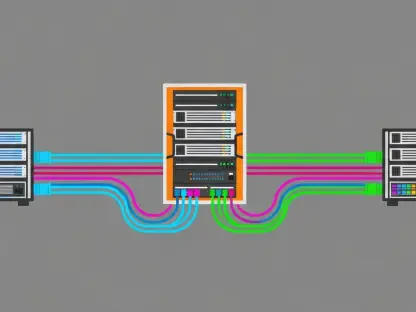The cloud computing landscape has seen significant advancements over the past few years, with single cloud, multicloud, and hybrid cloud models becoming well-established. Dominated by the “Big Three” cloud providers—Amazon Web Services (AWS), Microsoft Azure, and Google Cloud—the core principles of cloud administration and security have remained consistent. As businesses continuously innovate and embrace new technologies, the demand for more efficient, sustainable, and flexible cloud solutions has never been higher. However, nuanced advancements are shaping the future of cloud technology, indicating several emerging trends worth watching closely by 2025.
Cloud Sustainability Becomes More Quantifiable
Sustainability in cloud computing has been gaining attention due to growing awareness of environmental issues and the call for more responsible business practices. Previously, cloud providers have been criticized for their lack of transparency regarding energy sources and data center efficiency, making it difficult to measure the sustainability of their platforms. This measurement challenge hindered businesses from fully understanding the environmental impact of their chosen cloud services. By 2025, shifts in the industry are expected to provide more clarity and allow for quantifiable sustainability metrics.
Driven by increasing regulatory interest in sustainability reporting and efforts to combat “greenwashing,” businesses will demand tangible data on power usage effectiveness (PUE) and water usage effectiveness (WUE) from their cloud providers. These metrics will serve as key indicators of a cloud service’s environmental footprint. As these expectations rise, we can anticipate cloud providers to offer detailed, center-specific sustainability reports, helping companies make informed decisions aligned with both sustainability goals and regulatory requirements. This information transparency will foster enhanced corporate responsibility and drive better sustainability practices across industries.
Another driving factor behind the push for cloud sustainability metrics is the global trend toward achieving net-zero carbon emissions. Companies are setting ambitious targets and need reliable data to track their progress. In response to this growing demand for accountability, cloud providers are likely to adopt advanced technologies to optimize energy consumption and reduce their environmental impact. Real-time monitoring systems and AI-powered analytics could become standard tools for assessing energy efficiency and sustainability in data centers. These developments will empower businesses to contribute meaningfully to global sustainability efforts while maintaining robust and efficient cloud operations.
The Edge Computing Hype Subsides
Edge computing, where data processing is conducted closer to the data source rather than centralized data centers, was once heralded as a game-changer. The promise of enhanced performance, reduced latency, and improved security spurred significant interest in deploying edge resources. However, several practical limitations have tempered the enthusiasm around this technology. By 2025, the initial hype surrounding edge computing is expected to subside, as the technology struggles to mature and meet earlier expectations.
Observers like Gartner have noted that edge computing, while innovative, faces notable challenges in achieving widespread adoption. One significant issue is the hardware limitations of typical edge devices, such as smartphones and IoT gadgets, which lack the computational power necessary for advanced functions like AI inference. These constraints have led to slow progress in developing practical edge solutions for real-world applications. As a result, businesses will need to reevaluate their investment in edge technology and explore alternative approaches to meet their performance and security needs.
Despite these challenges, edge computing will remain relevant, particularly in scenarios where latency and data sovereignty are critical. For example, applications in autonomous vehicles, industrial automation, and smart cities can still benefit from localized data processing. However, the industry may shift focus towards enhancing existing edge infrastructures and integrating edge capabilities within broader cloud strategies. By adopting a more balanced approach, businesses can leverage the strengths of both central cloud and edge computing, optimizing their operations while addressing specific use cases where edge solutions provide tangible benefits.
Growing Interest in Supercloud
The concept of supercloud has been gaining traction recently, presenting a vision of a unified management layer that abstracts multiple cloud platforms, enabling seamless operations across public, private, and hybrid environments. This notion of simplified cloud management, interoperability, and flexibility is enticing, especially for businesses grappling with complex and diverse cloud infrastructures. While supercloud remains largely conceptual, its increasing popularity signals a potential shift in how organizations will approach cloud management in the future.
By 2025, the interest in supercloud architectures is expected to grow as businesses seek more flexible deployment and management solutions. The allure of supercloud lies in its promise to streamline cloud operations, reduce complexity, and enhance the interoperability between different cloud environments. This could lead to more efficient resource allocation, simplified orchestration, and improved scalability. Although mainstream adoption of supercloud by 2025 is unlikely, its evolving significance reflects the industry’s ongoing quest for adaptable and unified cloud management strategies.
One of the primary drivers behind the growing interest in supercloud is the need to address the limitations of current multi-cloud and hybrid cloud models. Managing disparate cloud environments often involves juggling different tools, interfaces, and policies, resulting in operational inefficiencies and increased costs. Supercloud aims to overcome these challenges by providing a cohesive management layer that spans across various cloud platforms. As businesses continue to explore this concept, we may see the development of more refined supercloud solutions, setting the stage for future innovations in cloud management and deployment.
Multicloud Becomes an Expectation
Initially perceived as an optional strategy, the adoption of multicloud architectures is increasingly becoming a necessity for businesses looking to optimize their cloud operations. Leveraging multiple cloud providers simultaneously, multicloud offers organizations the flexibility to choose the best tools and services for their specific needs while avoiding the pitfalls of vendor lock-in. As businesses recognize the disadvantages of relying solely on a single cloud provider, 2025 is poised to be the year when multicloud becomes a standard practice rather than an exception.
One of the key benefits driving this shift towards multicloud environments is cost optimization. By diversifying their cloud services, businesses can take advantage of competitive pricing, avoiding over-reliance on a single provider that could lead to unfavorable cost structures. Additionally, multicloud enables organizations to leverage specialized tools and services from different providers, ensuring they have access to the best solutions for each aspect of their operations. This flexibility is particularly valuable in an era where innovation and rapid technology adoption are critical for maintaining a competitive edge.
Another advantage of multicloud is its potential to enhance resilience and redundancy. By distributing workloads across multiple cloud providers, businesses can mitigate the risk of downtime caused by provider-specific outages or service disruptions. This approach not only improves business continuity but also bolsters overall system reliability. As the demand for robust, flexible, and cost-efficient cloud strategies continues to grow, businesses will increasingly view multicloud architectures as a fundamental component of their IT infrastructure, driving widespread adoption and normalization of these environments by 2025.
Intensifying Cloud Compliance Challenges
In recent years, the landscape of cloud computing has advanced tremendously, with the widespread adoption of single cloud, multicloud, and hybrid cloud models. The “Big Three” cloud providers—Amazon Web Services (AWS), Microsoft Azure, and Google Cloud—dominate the industry, and the foundational principles of cloud management and security have remained steadfast. As companies continuously explore and adopt innovative technologies, their need for more streamlined, sustainable, and adaptable cloud solutions has surged. This growing demand signifies that cloud technology is on the brink of further evolution, driven by nuanced developments. By 2025, several emerging trends are expected to play a crucial role in shaping the future of cloud technology. These trends are set to enhance the efficiency, security, and flexibility of cloud services, ensuring they meet the dynamic needs of modern businesses more effectively. As such, keeping a close eye on these advancements will be essential for companies aiming to stay competitive in an increasingly digital world.









